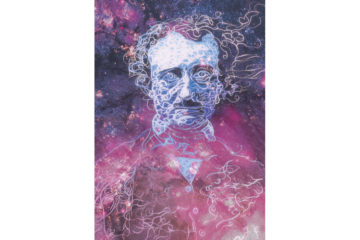Bob Blaisdell in The Christian Science Monitor:
 Readers of Edgar Allan Poe’s most famous prose and poetry might be unaware of how often he wrote about science. As John Tresch explains in “The Reason for the Darkness of the Night: Edgar Allan Poe and the Forging of American Science,” in the late 1840s, near the end of his life, Poe had established for himself “a unique position as fiction writer, poet, critic, and expert on scientific matters – crossing paths with and learning from those who were producing the ‘apparent miracles’ of modern science.”
Readers of Edgar Allan Poe’s most famous prose and poetry might be unaware of how often he wrote about science. As John Tresch explains in “The Reason for the Darkness of the Night: Edgar Allan Poe and the Forging of American Science,” in the late 1840s, near the end of his life, Poe had established for himself “a unique position as fiction writer, poet, critic, and expert on scientific matters – crossing paths with and learning from those who were producing the ‘apparent miracles’ of modern science.”
Poe exposed pseudoscientific hoaxes – and then, to get his own writing noticed, created them himself. He finally received critical acclaim for his now-classic short stories, among them “The Tell-Tale Heart” (which Tresch describes as “an act of violent irrationality [detailed] in the language of scientific method”) and “The Raven” (which Poe himself proclaimed “the greatest poem that ever was written”).
Tresch has painted a full landscape of the journalism of the time, describing the conflicts between writers who made serious scientific observations and those eager to sensationalize or misrepresent new discoveries. “Poe saw his age’s many humbugs and its ‘men of science’ pushing for foolproof forms of scientific authority as secret partners,” writes Tresch. “Together they were establishing the modern matrix of entertainment and science, doubt and certainty. Those who successfully denounced the tricks of charlatans were precisely those with the skills to make themselves believed.”
More here.
